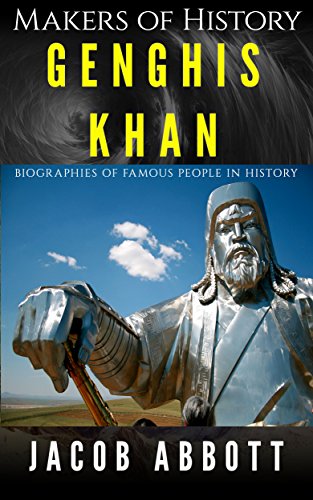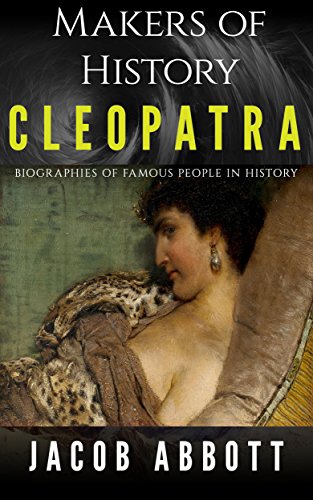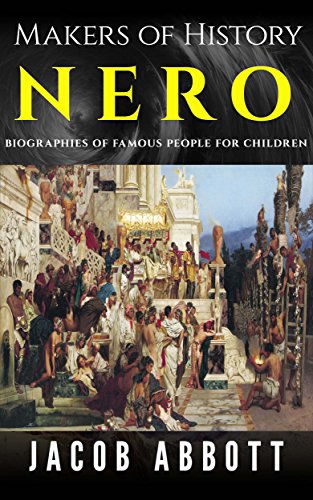-
Makers of History- Genghis Khan: Biographies of Famous People in History
Jacob Abbott
eBook (WestPub Online, March 9, 2016)Genghis Khan (/ˈdʒɛŋɡɪs ˈkɑːn/, often pronounced /ˈɡɛŋɡɪs ˈkɑːn/;[4][5] Mongol: [tʃiŋɡɪs xaːŋ] ( listen); c. 1162 – 18 August 1227), born Temüjin, was the founder and Great Khan (emperor) of the Mongol Empire, which became the largest contiguous empire in history after his demise.He came to power by uniting many of the nomadic tribes of Northeast Asia. After founding the Mongol Empire and being proclaimed "Genghis Khan", he started the Mongol invasions that resulted in the conquest of most of Eurasia. These included raids or invasions of the Qara Khitai, Caucasus, Khwarezmid Empire, Western Xia and Jin dynasties. These campaigns were often accompanied by wholesale massacres of the civilian populations – especially in the Khwarezmian and Xia controlled lands. By the end of his life, the Mongol Empire occupied a substantial portion of Central Asia and China.Before Genghis Khan died, he assigned Ögedei Khan as his successor and split his empire into khanates among his sons and grandsons.[6] He died in 1227 after defeating the Western Xia. He was buried in an unmarked grave somewhere in Mongolia at an unknown location.[7] His descendants extended the Mongol Empire across most of Eurasia by conquering or creating vassal states out of all of modern-day China, Korea, the Caucasus, Central Asia, and substantial portions of modern Eastern Europe, Russia, and Southwest Asia. Many of these invasions repeated the earlier large-scale slaughters of local populations. As a result, Genghis Khan and his empire have a fearsome reputation in local histories.
-
Makers of History - Cyrus the Great: Biographies of Famous People in History
Jacob Abbott
language (WestPub Online, March 8, 2016)Cyrus II of Persia (Old Persian: KUURUUSHA[4] Kūruš; New Persian: کوروش Kurosh ; c. 600 or 576 – 530 BC),[5] commonly known as Cyrus the Great [6] (Persian: کوروش بزرگ, Kourosh-e-Bozorg) and also called Cyrus the Elder by the Greeks, was the founder of the Achaemenid Empire.[7] Under his rule, the empire embraced all the previous civilized states of the ancient Near East,[7] expanded vastly and eventually conquered most of Southwest Asia and much of Central Asia and the Caucasus. From the Mediterranean Sea and Hellespont in the west to the Indus River in the east, Cyrus the Great created the largest empire the world had yet seen.[8] Under his successors, the empire eventually stretched from parts of the Balkans (Bulgaria-Paeonia) and Thrace-Macedonia in the west, to the Indus Valley in the east. His regal titles in full were The Great King, King of Persia, King of Anshan, King of Media, King of Babylon, King of Sumer and Akkad, and King of the Four Corners of the World.The reign of Cyrus the Great lasted between 29 and 31 years. Cyrus built his empire by conquering first the Median Empire, then the Lydian Empire and eventually the Neo-Babylonian Empire. Either before or after Babylon, he led an expedition into central Asia, which resulted in major campaigns that were described as having brought "into subjection every nation without exception".[9] Cyrus did not venture into Egypt, as he himself died in battle, fighting the Massagetae along the Syr Darya in December 530 BC.[10][11] He was succeeded by his son, Cambyses II, who managed to add to the empire by conquering Egypt, Nubia, and Cyrenaica during his short rule.
-
Makers of History - Hannibal: Biographies of Famous People in History
Jacob Abbott
language (WestPub Online, March 13, 2016)Hannibal (247 – between 183 and 181 BC),[n 1] fully Hannibal Barca, was a Punic Carthaginian military commander, generally considered one of the greatest military commanders in history. His father Hamilcar Barca was the leading Carthaginian commander during the First Punic War. His younger brothers were Mago and Hasdrubal, and he was brother-in-law to Hasdrubal the Fair.Hannibal lived during a period of great tension in the Mediterranean, when the Roman Republic established its supremacy over other great powers such as Carthage and the Hellenistic kingdoms of Macedon, Syracuse, and the Seleucid Empire. One of his most famous achievements was at the outbreak of the Second Punic War, when he marched an army which included elephants from Iberia over the Pyrenees and the Alps into Italy. In his first few years in Italy, he won three dramatic victories—Trebia, Trasimene, and Cannae, in which he distinguished himself for his ability to determine his and his opponent's strengths and weaknesses, and to play the battle to his strengths and the enemy's weaknesses—and won over many allies of Rome. Hannibal occupied much of Italy for 15 years, but a Roman counter-invasion of North Africa forced him to return to Carthage, where he was decisively defeated by Scipio Africanus at the Battle of Zama. Scipio had studied Hannibal's tactics and brilliantly devised some of his own, and finally defeated Rome's nemesis at Zama, having previously driven Hannibal's brother Hasdrubal out of the Iberian Peninsula.After the war, Hannibal successfully ran for the office of suffete. He enacted political and financial reforms to enable the payment of the war indemnity imposed by Rome; however, Hannibal's reforms were unpopular with members of the Carthaginian aristocracy and in Rome, and he fled into voluntary exile. During this time, he lived at the Seleucid court, where he acted as military advisor to Antiochus III in his war against Rome. Antiochus met defeat at the Battle of Magnesia and was forced to accept Rome's terms, and Hannibal fled again, making a stop in Armenia. His flight ended in the court of Bithynia, where he achieved an outstanding naval victory against a fleet from Pergamon. He was afterwards betrayed to the Romans and committed suicide by poisoning himself.Hannibal is often regarded as one of the greatest military strategists in history and one of the greatest generals of antiquity, together with Alexander the Great, Julius Caesar, Scipio, and Pyrrhus of Epirus. Plutarch states that Hannibal was questioned by Scipio as to who was the greatest general, and Hannibal replied either Alexander or Pyrrhus, then himself,[6] or, according to another version of the event, Pyrrhus, Scipio, then himself.[7] Military historian Theodore Ayrault Dodge called Hannibal the "father of strategy",[8] because his greatest enemy, Rome, came to adopt elements of his military tactics in its own strategic arsenal. This praise has earned him a strong reputation in the modern world, and he was regarded as a great strategist by Napoleon Bonaparte and others.
-
Makers of History – Cleopatra: Biographies of Famous People in History
Jacob Abbott
language (WestPub Online, March 8, 2016)Cleopatra VII Philopator (Greek: Κλεοπάτρα Φιλοπάτωρ; 69[1] – August 12, 30 BC[2]), known to history simply as Cleopatra, was the last active pharaoh of Ptolemaic Egypt, shortly survived as pharaoh by her son Caesarion. After her reign, Egypt became a province of the then-recently established Roman Empire.Cleopatra was a member of the Ptolemaic dynasty, a family of Macedonian Greek[3] origin that ruled Egypt after Alexander the Great's death during the Hellenistic period. The Ptolemies, throughout their dynasty, spoke Greek[4] and refused to speak Egyptian, which is the reason that Greek as well as Egyptian languages were used on official court documents such as the Rosetta Stone.[5] By contrast, Cleopatra did learn to speak Egyptian[6] and represented herself as the reincarnation of an Egyptian goddess, Isis.Cleopatra originally ruled jointly with her father, Ptolemy XII Auletes, and later with her brothers, Ptolemy XIII and Ptolemy XIV, whom she married as per Egyptian custom, but eventually she became sole ruler. As pharaoh she consummated a liaison with Julius Caesar that solidified her grip on the throne. She later elevated her son with Caesar, Caesarion, to co-ruler in name.After Caesar's assassination in 44 BC, she aligned with Mark Antony in opposition to Caesar's legal heir, Gaius Julius Caesar Octavianus (later known as Augustus). With Antony, she bore the twins Cleopatra Selene II and Alexander Helios, and another son, Ptolemy Philadelphus (her unions with her brothers had produced no children). After losing the Battle of Actium to Octavian's forces, Antony committed suicide. Cleopatra followed suit. According to tradition, she killed herself by means of an asp bite on August 12, 30 BC.[7] She was outlived by Caesarion, who was declared pharaoh by his supporters, but soon killed on Octavian's orders. Egypt then became the Roman province of Aegyptus.To this day, Cleopatra remains a source of perpetual fascination in Western culture. Her legacy survives in numerous works of art and many dramatizations of incidents from her life in literature and other media, including William Shakespeare's tragedy Antony and Cleopatra, George Bernard Shaw's play Caesar and Cleopatra, Jules Massenet's opera Cléopâtre and the 1934 and 1963 films Cleopatra.
-
Makers of History - Charles I: Biographies of Famous People in History
Jacob Abbott
language (WestPub Online, March 7, 2016)This scarce antiquarian book is included in our special Legacy Reprint Series. In the interest of creating a more extensive selection of rare historical book reprints, we have chosen to reproduce this title even though it may possibly have occasional imperfections such as missing and blurred pages, missing text, poor pictures, markings, dark backgrounds and other reproduction issues beyond our control. Because this work is culturally important, we have made it available as a part of our commitment to protecting, preserving and promoting the world's literature.
-
Makers of History - Darius the Great: Biographies of Famous People in History
Jacob Abbott
language (WestPub Online, March 8, 2016)The chronicles of Darius the Great are some of the greatest annals in Persian history. In about 600 B.C., the founder of the Persian Empire, Cyrus the Great was on a campaign to expand his dominion and obtain some additional glory by defeating certain uncivilized tribes to the north, beyond the Araxes. One night, after he had crossed a mighty river, on the way to his triumphs, he had a remarkable dream. His dream was that Darius, the son of one of his advisers, and a non-heir to the throne, appeared to him with vast wings growing from his shoulders, overshadowing the whole known world. To Cyrus, it seemed that Darius would eventually hold sway over his empire, and immediately sent for Hystaspes, the father of Darius, to keep a close eye on him until such a time as Cyrus could return. Cyrus, in fact, was killed in a battle, never to return. The heir-ship was passed to one of Cyrus' two rightful sons, Cambyses.Under his new reign, Cambyses undertook to expand his empire and conquer new lands. He set his sights on Egypt, whose king he felt, had betrayed his father in a convoluted scheme. While there he achieved great victories against the people of Egypt, however, on his way back, he heard of a conspiracy that his brother Smerdis had been killed and an impostor had usurped the throne back in Susa, the capital city. A local magician also named Smerdis who bore a remarkable likeness to the heir, had taken his place. In his haste to return to the capital, and with great irony, Cambyses suffered a nasty wound while mounting his horse as his blade fell from its sheath. Unfortunately, the wound turned out to be fatal, and the impersonator was then firmly in power.
-
Makers of History – Nero: Biographies of Famous People for Children
Jacob Abbott
language (WestPub Online, March 17, 2016)Nero (/ˈnɪəroʊ/; Latin: Nerō Claudius Caesar Augustus Germanicus;[1] 15 December 37 AD – 9 June 68 AD)[2] was Roman Emperor from 54 to 68, and the last in the Julio-Claudian dynasty. Nero was adopted by his grand-uncle Claudius to become his heir and successor, and succeeded to the throne in 54 following Claudius' death.Nero focused much of his attention on diplomacy, trade and enhancing the cultural life of the Empire, but according to the historian Tacitus he was viewed by the Roman people as compulsive and corrupt. He ordered theatres built and promoted athletic games. During his reign, the redoubtable general Corbulo conducted a successful war and negotiated peace with the Parthian Empire. His general Suetonius Paulinus crushed a revolt in Britain. Nero annexed the Bosporan Kingdom to the Empire and began the First Jewish–Roman War.In 64 AD, most of Rome was destroyed in the Great Fire of Rome, which many Romans believed Nero himself had started in order to clear land for his planned palatial complex, the Domus Aurea. In 68, the rebellion of Vindex in Gaul and later the acclamation of Galba in Hispania drove Nero from the throne. Facing a false report of being denounced as a public enemy who was to be executed, he committed suicide on 9 June 68 (the first Roman emperor to do so).[3] His death ended the Julio-Claudian Dynasty, sparking a brief period of civil wars known as the Year of the Four Emperors. Nero's rule is often associated with tyranny and extravagance.[4] He is known for many executions, including that of his mother,[5] and the probable murder by poison of his stepbrother Britannicus.Nero was rumored to have had captured Christians dipped in oil and set on fire in his garden at night as a source of light.[6] This view is based on the writings of Tacitus, Suetonius and Cassius Dio, the main surviving sources for Nero's reign, but a few surviving sources paint Nero in a more favourable light.[7] Some sources, including some mentioned above, portray him as an emperor who was popular with the common Roman people, especially in the East.[8] Some modern historians question the reliability of ancient sources when reporting on Nero's tyrannical acts.
-
Makers of History - Xerxes: Biographies of Famous People for Children
Jacob Abbott
eBook (WestPub Online, March 28, 2016)Xerxes I of Persia (/ˈzɜːrksiːz/; Old Persian: x-š-y-a-r-š-a (About this sound Khashayarsha (help·info)), meaning "ruling over heroes",[1] Greek Ξέρξης [ksérksɛːs] (519–465 BC), also known as Xerxes the Great, was the fourth of the king of kings of the Achaemenid Empire. He ruled from 486 BC until his assassination in 465 BC at the hands of Artabanus, the commander of the royal bodyguard.Xerxes I is most likely the Persian king identified as Ahasuerus in the biblical Book of Esther.[2][3][4] He is also notable in Western history for his invasion of Greece in 480 BC. Like his predecessor Darius I, he ruled the empire at its territorial apex, although Xerxes I would briefly manage to conquer even more land of mainland Greece than Darius I through the battles at Thermopylae and Artemisium, overrunning Attica, Boeotia, Euboea, Thessaly,[5] and the rest of mainland Greece to the north of the Isthmus of Corinth,[6] until the losses at Salamis and Plataea which reversed these gains and would eventually end the second invasion decisively.
-
Makers of History – Romulus: Biographies of Famous People for Children
Jacob Abbott
language (WestPub Online, March 28, 2016)Romulus /ˈrɒmjᵿləs/ and Remus /ˈriːməs/ were the twin brothers and main characters of Rome's foundation myth. (The pronunciation in English is different from the Latin original Rōmulus and Rĕmus). Their mother was Rhea Silvia, daughter of Numitor, king of Alba Longa. Before their conception, Numitor's brother Amulius seized power, killed Numitor's male heirs and forced Rhea Silvia to become a Vestal Virgin, sworn to chastity. Rhea Silvia conceived the twins by the god Mars. Once the twins were born, Amulius had them abandoned to die in the Tiber river. They were saved by a series of miraculous interventions: the river carried them to safety, a she-wolf found and suckled them, and a woodpecker fed them. A shepherd and his wife found them and fostered them to manhood as simple shepherds. The twins, still ignorant of their true origins, proved to be natural leaders. Each acquired many followers. When they discovered the truth of their birth, they killed Amulius and restored Numitor to his throne. Rather than wait to inherit Alba Longa, they chose to found a new city.While Romulus wanted to found the new city on the Palatine Hill, Remus preferred the Aventine Hill.[2] They agreed to determine the site through augury but when each claimed the results in his own favor, they quarreled and Remus was killed.[3] Romulus founded the new city, named it Rome, after himself, and created its first legions and senate. The new city grew rapidly, swelled by landless refugees; as most of these were male and unmarried, Romulus arranged the abduction of women from the neighboring Sabines. The ensuing war ended with the joining of Sabines and Romans as one Roman people. Thanks to divine favour and Romulus's inspired leadership, Rome became a dominant force, but Romulus himself became increasingly autocratic, and disappeared or died in mysterious circumstances. In later forms of the myth, he ascended to heaven and was identified with Quirinus, the divine personification of the Roman people.The legend as a whole encapsulates Rome's ideas of itself, its origins and moral values. For modern scholarship, it remains one of the most complex and problematic of all foundation myths, particularly Remus's death. Ancient historians had no doubt that Romulus gave his name to the city. Most modern historians believe his name a back-formation from the name Rome; the basis for Remus's name and role remain subjects of ancient and modern speculation. The myth was fully developed into something like an "official", chronological version in the Late Republican and early Imperial era; Roman historians dated the city's foundation to between 758 and 728 BC, and Plutarch reckoned the twins' birth year as c. 27/28 March 771 BC. An earlier tradition that gave Romulus a distant ancestor in the semi-divine Trojan prince Aeneas was further embellished, and Romulus was made the direct ancestor of Rome's first Imperial dynasty. Possible historical bases for the broad mythological narrative remain unclear and disputed.[4] The image of the she-wolf suckling the divinely fathered twins became an iconic representation of the city and its founding legend, making Romulus and Remus preeminent among the feral children of ancient mythography.